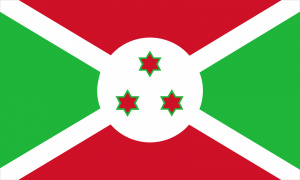Language/Rundi/Culture/Music-and-Dance
Burundi, a small country located in East Africa, may have a relatively unknown music scene, but it is certainly not one to be underestimated. Music and dance play an essential role in Burundian culture, and it is an essential part of many social and religious events. In this lesson, you will learn about traditional and contemporary Burundian music and dance styles, as well as popular instruments and artists in Rundi culture.
Traditional Music and Dance
Traditionally, music in Burundi is played to mark special occasions such as weddings, christenings, funerals, and initiation rituals. Drums are central to Burundian music, and there are several types of drum, each with a specific function in the ensemble. Burundi traditional music has a strong emphasis on rhythm rather than melody, with percussive instruments such as drums and rattles playing the leading role.
The drummers, usually accompanied by dancers, create elaborate rhythms in which every component of the ensemble plays its unique part. Traditionally, the Burundians use the Inanga zither which has eight strings to create music used in traditional dance. The drums come in various sizes and shapes, such as the "ingoma," "karyenda," and "amashako" (also called "mishale"). The "Ingoma" drum is the most important, with a deep, sonorous sound and is used to signal important events in the community.
Burundian traditional dance is a product of traditional drumming. The drum communicates to the dancers; they, in turn, express themselves in their movement, creating an energetic and passionate dance. Both men and women participate in traditional dances, which vary according to the occasion. For instance, the Ikirori dance or "dance of the cows" performed by women during agricultural festivals are among the most popular traditional dances in Burundi.
Popular Instruments
In Burundi, traditional instruments such as the Inanga, Umuduri, and Amakondera, traditionally used in accompaniment of dance, are highly respected and considered part of the national heritage.
The Inanga is a string instrument with eight strings and is played with both hands while the Umuduri is a solo instrument played with a stick. The biggest cultural instrument of Burundi is the "Amakondera" or the "masinqo" in the Tigrinya language, a one-stringed fiddle with origins dating back to East Africa.
Beyond traditional instruments, guitar and keyboard have become widespread and popular in Burundi's contemporary music scene. Traditional instruments and contemporary music equipment have merged to create a distinct style of Burundian music reflecting western sounds and African heritage. Burundian musicians have tried to fuse traditional music styles with modern African rhythms such as rumba or reggae.
Contemporary Music and Dance
In recent years, Burundian contemporary music (often referred to as "soul") has been increasing in popularity both within the country and internationally. The younger generation is leading the way, creating new styles and sounds that incorporate traditional Burundian rhythms with modern melodies and instruments.
Burundian musicians have made substantial progress since the 1990s. More and more festivals have been organized to celebrate local music every year. In addition, TV and radio have played a significant role in promoting Burundian music, with local radios developing dedicated programs relating to different genres of music.
Popular contemporary music artists include Khadja Nin, Kidum, Big Fizzo, to mention a few. Khadja Nin, a Burundian singer, has been internationally recognized and has won numerous awards for her music. She is known for her powerful voice, which combines traditional Burundian rhythms with modern influences.
Conclusion
In conclusion, Burundian music and dance styles are an essential part of the country's cultural and social identity. Traditional music and dance continue to inform contemporary music styles, reflecting Burundian's heritage and the experiences of its people today. By understanding the country's musical traditions, you can appreciate and engage with Rundi culture more fully.
Some key vocabularies:
| Rundi | Pronunciation | English |
|---|---|---|
| Amakondera | am-ah-kon-dare-ah | One-string fiddle |
| Ikirori | ee-kee-raw-ree | Dance of the cows |
| Inanga | ee-nang-ah | Traditional Harp |
| Karyenda | kar-yen-dah | Sticksidedoumstick-sidedoum |

